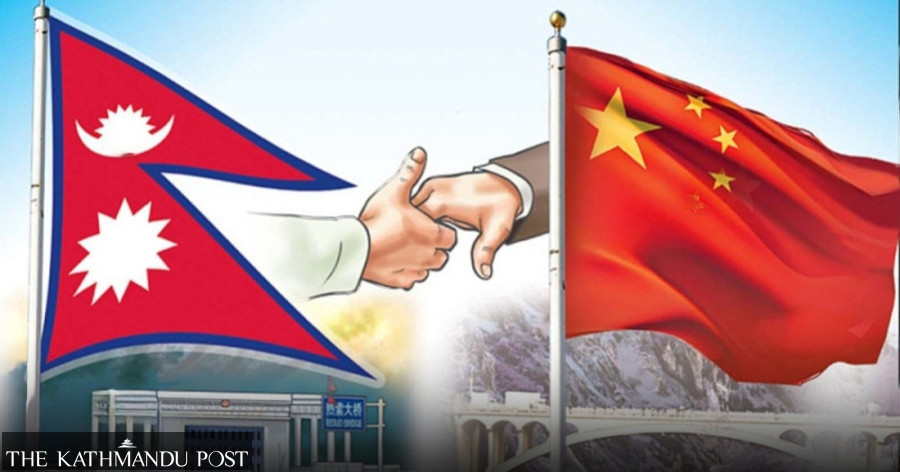Columns
Nepal’s China dilemma
Nepal must strive to shape a bipartisan policy when dealing with its immediate neighbours.
Siddhartha Thapa
China celebrated the 10th anniversary of the founding of the Communist Republic of China in 1959. A Nepali delegation also visited the country to participate in the celebrations conducted by the Chinese Communist Party. Surya Bahadur Thapa, a minister in the interim government formed by King Mahendra, led the Nepali delegation.
At the end of Thapa’s sojourn to China, his Chinese interlocutors informed him that Chairman Mao would grant him a meeting. Thapa was advised to carry three messages to King Mahendra. First, Mao informed Thapa that the Chinese were not in a race with India to provide developmental assistance to Nepal. Second, he assured that China would not let anyone compromise issues related to Nepal’s sovereignty. Finally, Mao said that Thapa must advise the King to maintain good relations with India to ensure political stability in Nepal.
Leading a semi-retired life half a decade later, the octogenarian Thapa was curiously observing the evolving politics of the peace process, which marked a gargantuan shift in Nepali society. Pushpa Kamal Dahal had just resigned as prime minister over his failed attempt to depose the army chief in 2010. At this point, he seemed hellbent on soliciting China’s support to return to power. After losing power, Dahal visited the northern neighbour with a plan to counter India. This was Dahal playing the China card in Nepali politics in the early phase of the peace process.
After returning to Nepal from his China visit in 2011, Dahal’s trusted China hand Agni Sapkota declared China’s prophetic advice to the visiting Maoist delegation: To mend ties with India for stability in Nepal. Thapa observed that great powers seldom change track at provocations insinuated by political frictions of Nepali leaders. He also witnessed that China had upheld its tested Nepal policy for over 50 years since different regimes in Nepal continued with their commitment to the One China Policy.
Interestingly, China’s ambitious global outreach in recent times has compelled analysts to examine whether its policy is evolving towards deeper engagement in Nepal. For instance, many analysts have characterised the Belt and Road Initiative (BRI) as a geopolitical initiative that aims to provide strategic leverage over other countries. BRI is a signature foreign policy of President Xi Jinping, which was announced in 2013 to connect China closer to the world through infrastructure and investment projects. Unsurprisingly, Beijing would want Nepal to be a part of President Xi’s ambitious foreign policy gambit. While Nepal signed the BRI Framework Agreement in 2017, Beijing is now pressing Kathmandu to move forward with the BRI implementation plan.
Given the heightened geopolitical rivalry, including in the SAARC region, the BRI implementation plan was bound to face scrutiny in Nepal. The fact that the document has not been made public and the details of the plan remain elusive gives way to rising speculations on the negative aspects of the proposed plan.
In a democracy, process and content fundamentally determine the course of bilateral or multilateral treaties. As in Millennium Challenge Corporation (MCC), the proposed implementation plan should have been made public to allow for debates, enhancing the understanding of the agreement. Also, the government, in the Parliament’s absence, could have called an all-party meeting or referred the plan to the international committee of the Lower House of Parliament. MCC received bipartisan support since Nepal’s parliament endorsed it after many rounds of deliberations and amendments. Therefore, as Nepal builds on its relationship with its neighbours, the political leadership in Kathmandu should provide space to open debates on the policy choices it intends to initiate. More importantly, Nepal must strive to achieve bipartisan support on critical issues impacting its external relations, especially with its neighbours.
As Nepal’s economy struggles due to political instability, bilateral and multilateral funding will continue to play a pivotal role in fueling growth. However, there are genuine concerns regarding BRI that should be clarified. It is widely reported that BRI has led to unsustainable debt in several countries, and the bad debt incurred through its funded projects has seriously impacted their economies. Sri Lanka and Pakistan are perfect examples in the region, illustrating that large infrastructure projects with high interest rates plunge the economy into a crisis with high debt-to-GDP ratios. This situation leads to unstainable levels, eventually producing a balance-of-payment deficit and a large-scale financial crisis that triggered protests in Sri Lanka.
Nepal must prudently select projects that it can repay, and the borrowing rates must be on par with what the Asian Development Bank (ADB) and the World Bank Group offer for financing infrastructure projects in the country. In simple words, we must bite what we can chew in terms of envisioning big-ticket infrastructure projects that require enormous amounts of capital.
Another aspect of the implementation plan that was criticised was how the plan covers an entire range of areas of cooperation, including law enforcement and other areas unrelated to infrastructure development. Any imbalance in Nepal’s foreign policy will be watched closely by Nepal’s friends on the global stage. Coincidently, Donald Trump’s NSC designate recently visited Kathmandu, which reinforces Nepal’s geopolitical importance.
The BRI implementation plan, in its current speculated form, has broader strategic and geopolitical implications. There seems to be no clarity on the requirement of the plan for BRI projects, as countries worldwide haven’t signed it. Therefore, the rationale for Nepal signing the agreement is largely questionable at this stage. At all costs, Nepal must avoid sending a signal that it has chosen a particular geopolitical camp.
Advocates of the implementation plan mention that this is only an in-principal document. If so, the political leadership of Nepal must evaluate that by conceding Nepal’s principled position on seeking grants or concessional loans at the World Bank and the ADB rates. Observers will question the neutrality of the in-principal stand taken to endorse the document. Those opposing the plan in its present form will continue to argue that once a country loses on principle, what else is there to lose?
Nepali politicians and policymakers at the strategic level should realise Beijing has moved ahead from the traditional way of looking at Nepal. Nepal should assess whether China has shifted the goalpost and its commitments by introducing a non-essential implementation plan as one of its priorities—from a geopolitical perspective—and what it means for the country. Moreover, Kathmandu’s position should be to seek the implementation of past announcements and promises. Lastly, Sino-Nepal relations are of historical importance, and therefore, they cannot be reduced to dividing political forces in Nepal. Nepali politicians need to improvise their foreign policy positioning by understanding that state-to-state relations are becoming more transactional and that each nation will aim to expand its leverage over the other. It is time an aspiring Nepali woke up to the reality of cutthroat competition for influence in international relations.




 15.12°C Kathmandu
15.12°C Kathmandu















